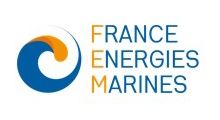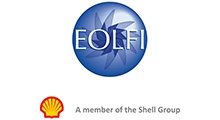
BIODHYL
Biofouling integrative characterization and description of hydrodynamic loadings
Duration: 36 months (2022-2025)
Context
The current trend is to limit or eliminate cleaning operations in farms in order to preserve their reef effect and thus reduce their environmental impact, while drastically limiting maintenance costs. This is only possible if the phenomenon of biocolonisation is sufficiently understood to be anticipated. A focus on mooring lines and dynamic cables seems essential, as these key components are presumed to have a different hydromechanical behaviour and therefore a different lifetime once colonised. As biocolonisation can vary according to environmental conditions, it is also necessary to characterise biofouling on the sites of future wind, tidal and wave energy farms.
Objectives
- To better understand the structural and environmental impacts of the development of biofouling on floating systems
- To identify the most reliable and robust techniques to characterise biofouling in an automated way
Scientific and technical content
- In-situ characterisation of biofouling and study of the influence of parameters such as immersion time, depth, physico-chemical conditions, and site hydrodynamics
- Development of methodologies to combine morphological approach and metabarcoding to better characterise biofouling
- Definition and characterisation of hydromechanical biofouling groups based on the different fluid-structure behaviours given by the scientific literature and refined by mechanical tests
- Building of a generic full scale numerical model of floating wind system including mooring and dynamic cable
- State of the art of technologies allowing to automate the recognition and the metrology of biofouling, then benchmark qualification
Resources
Funding and partners
This project is led by France Energies Marines.










The total project budget is €1,607K.
This project receives funding from France Energies Marines and its members and partners, as well as French State funding managed by the National Research Agency under the France 2030 investment plan. It also benefits from the financial support of Bretagne, Occitanie, Pays de la Loire and SUD Provence-Alpes-Côte d’Azur regions.
Photo credit: France Energies Marines